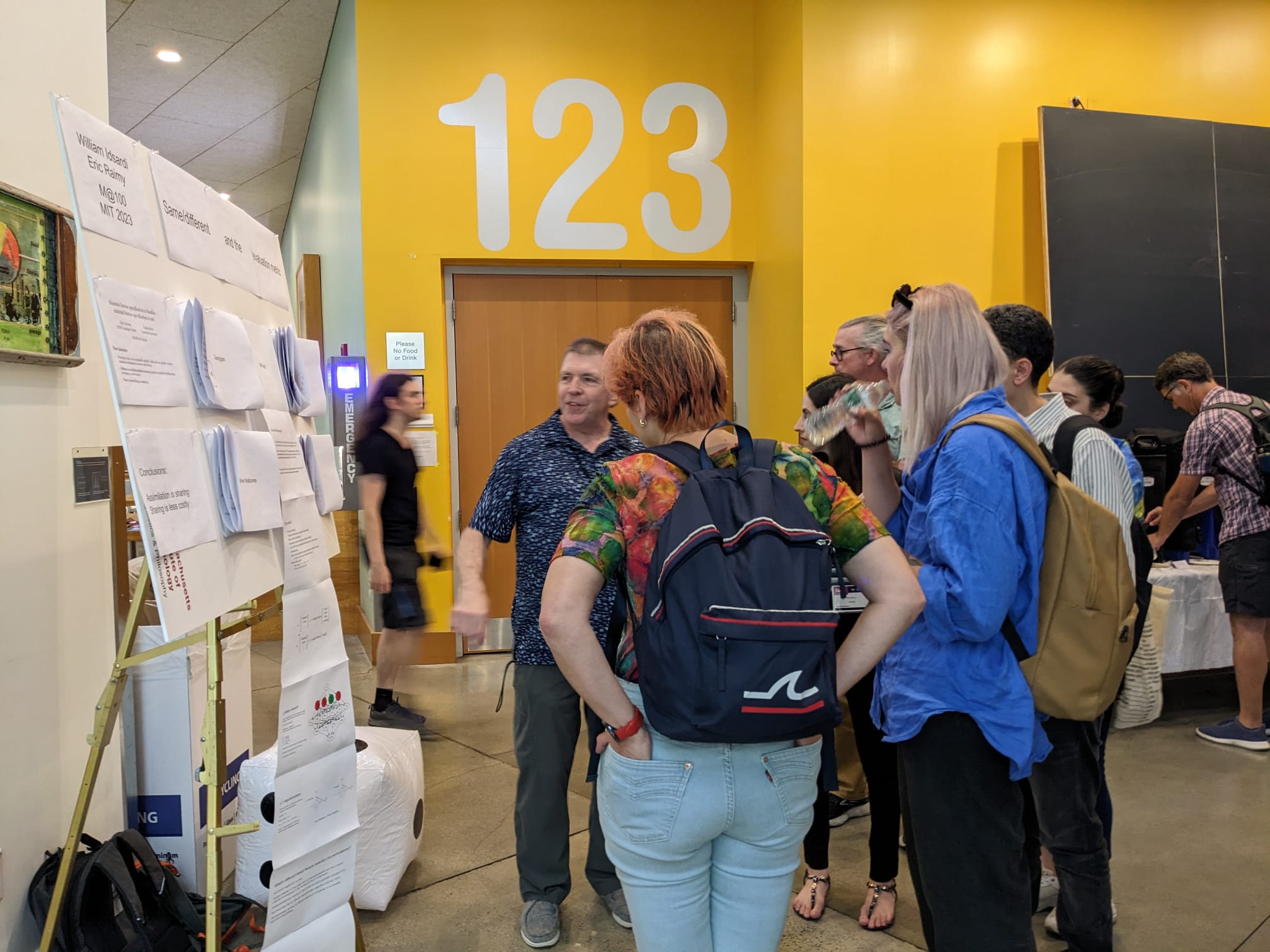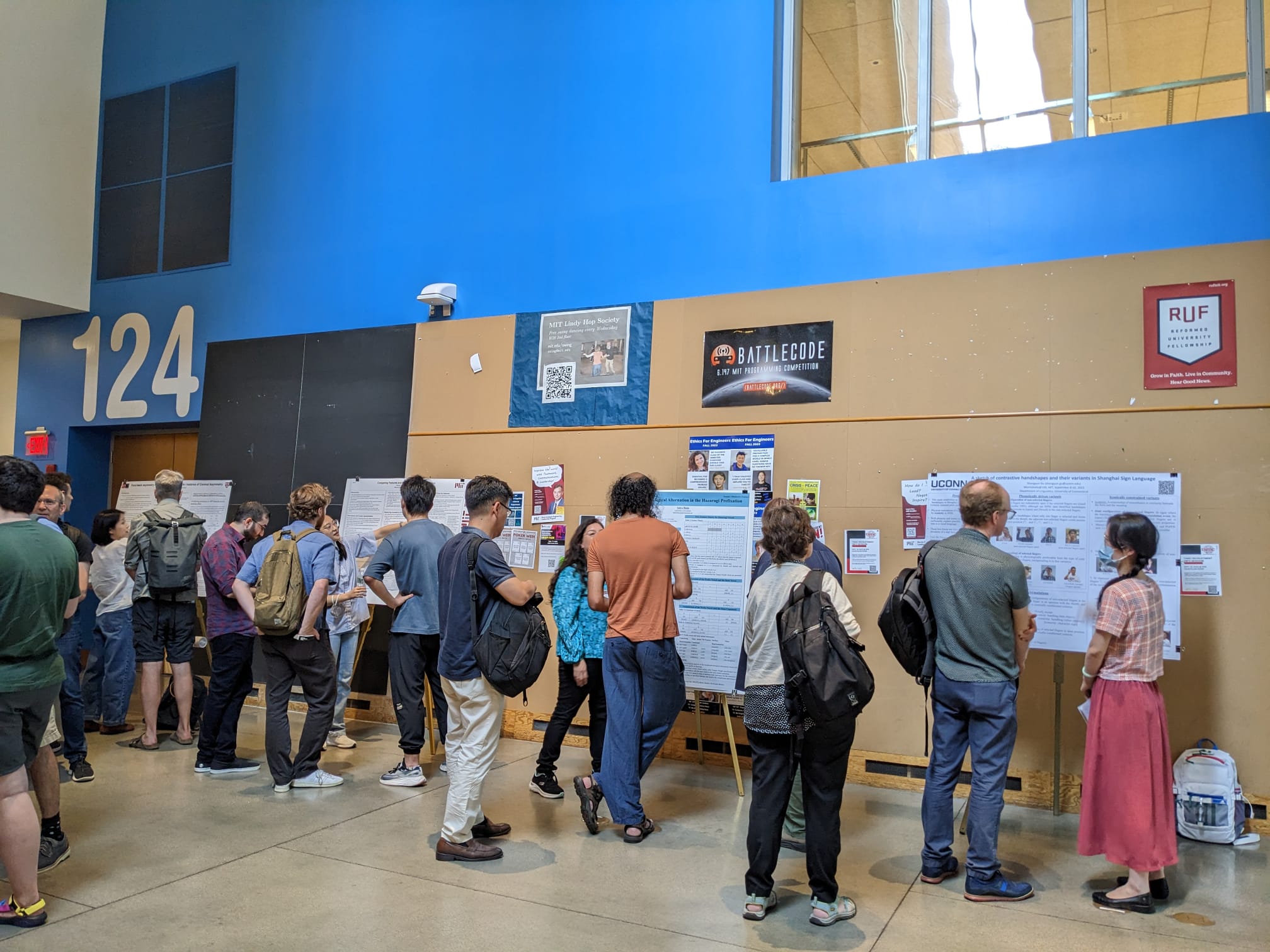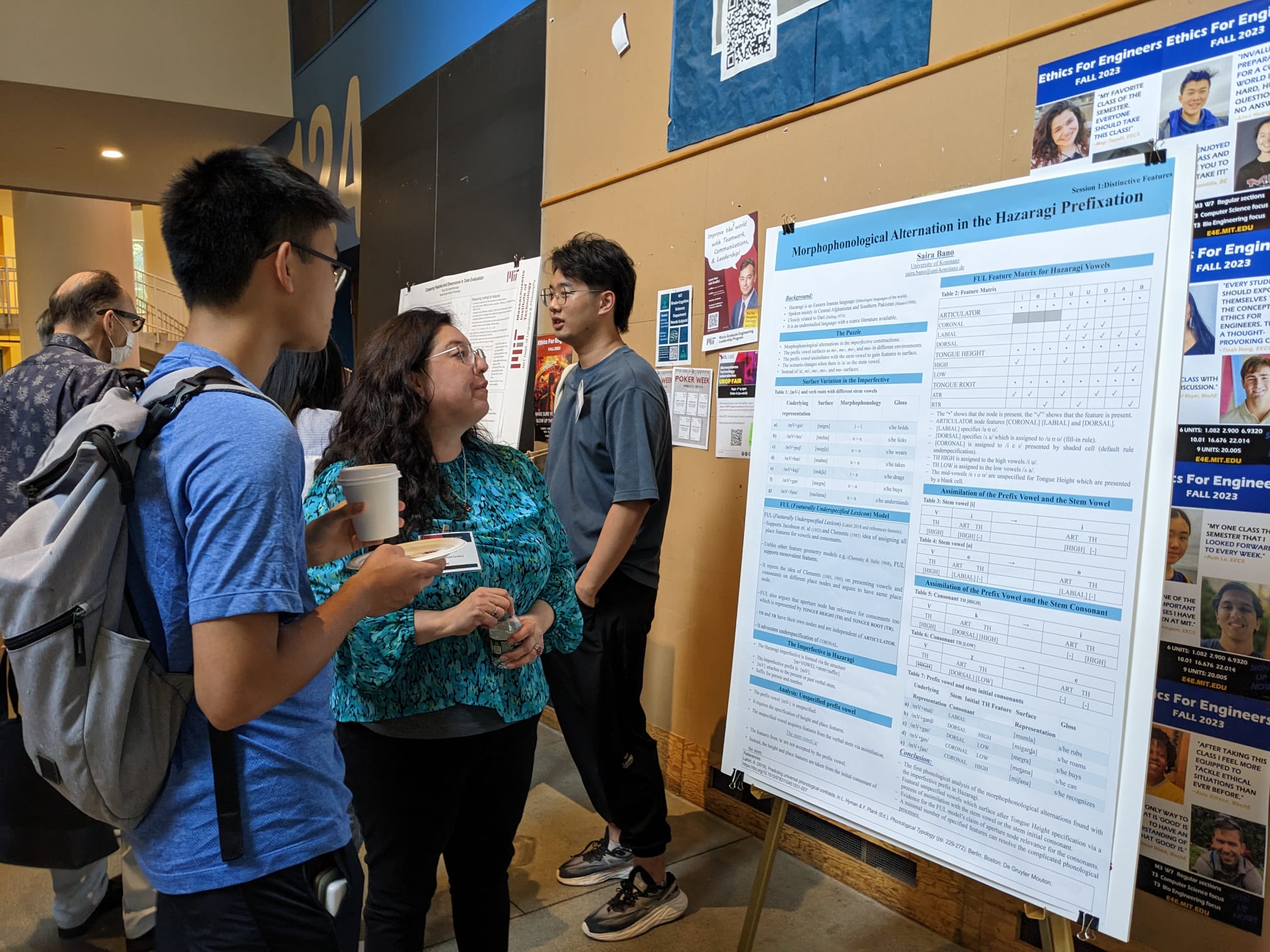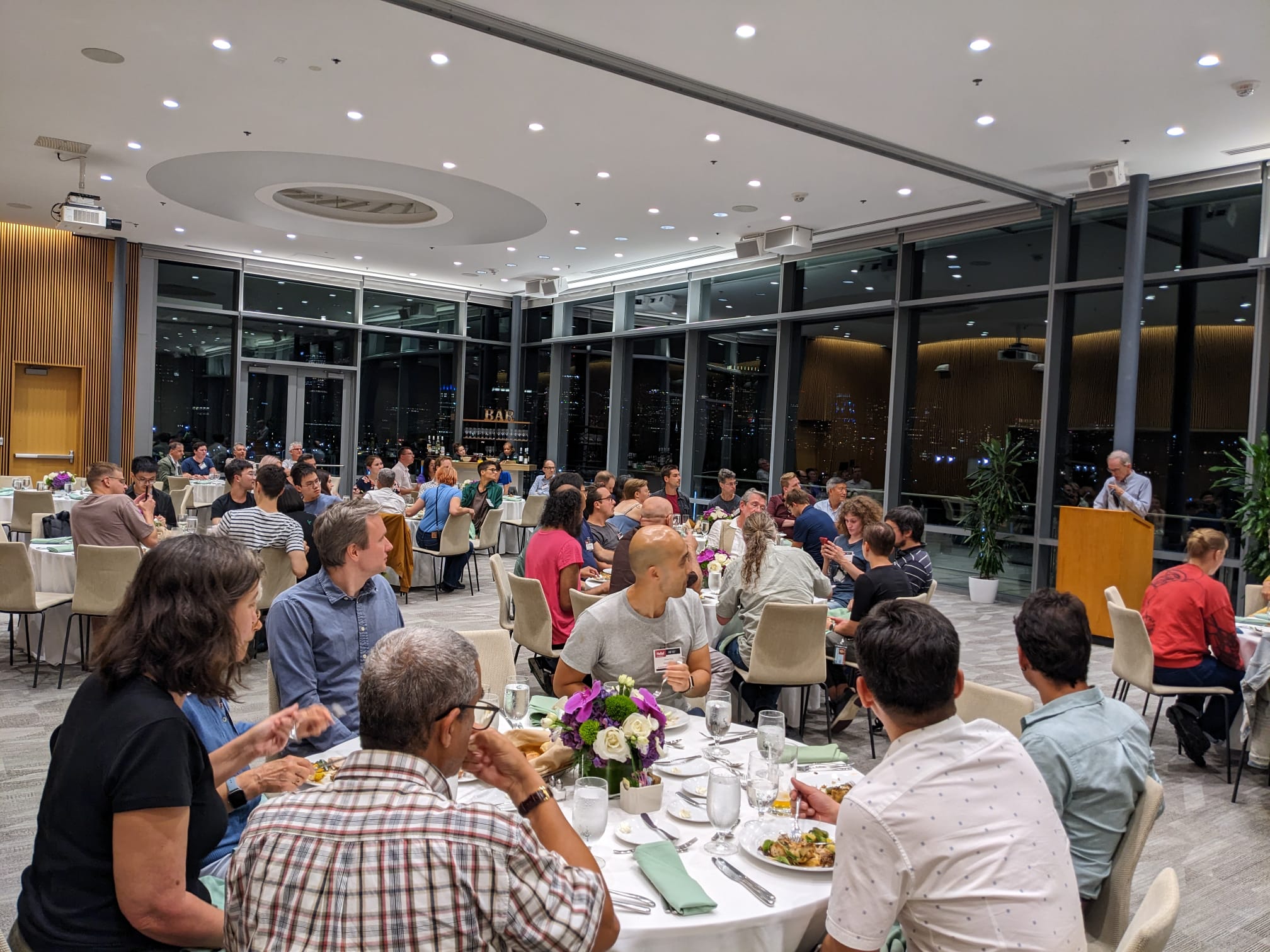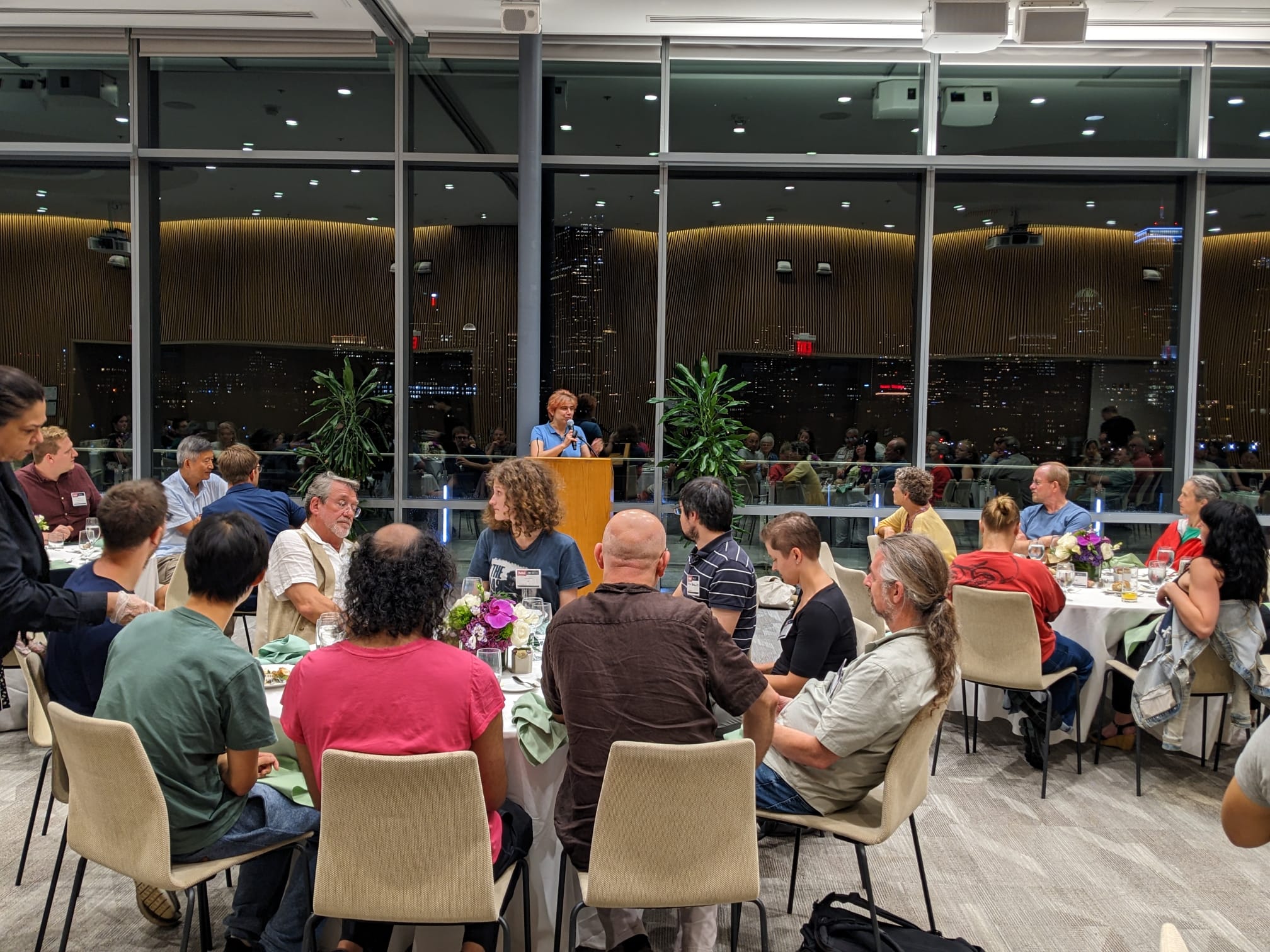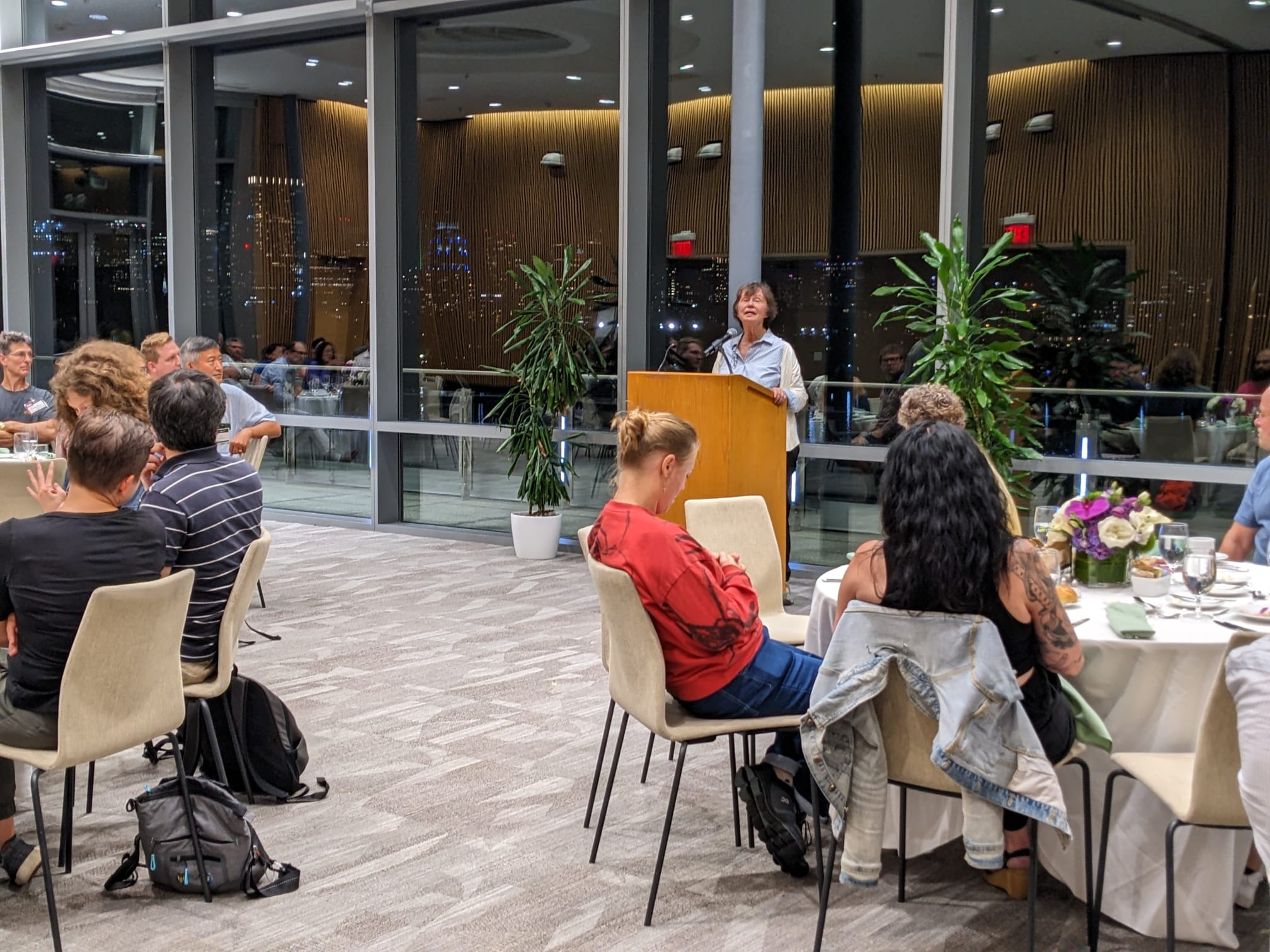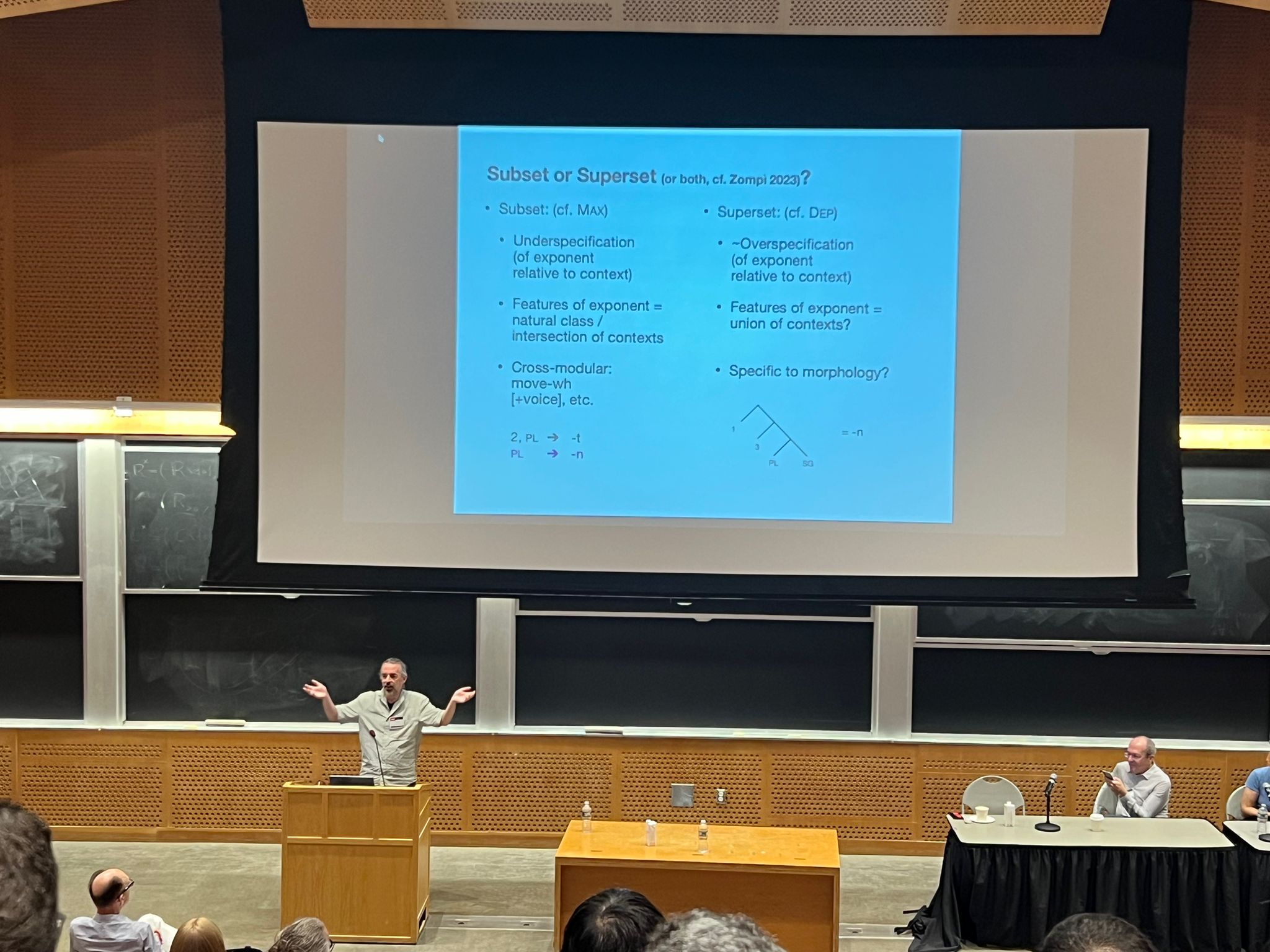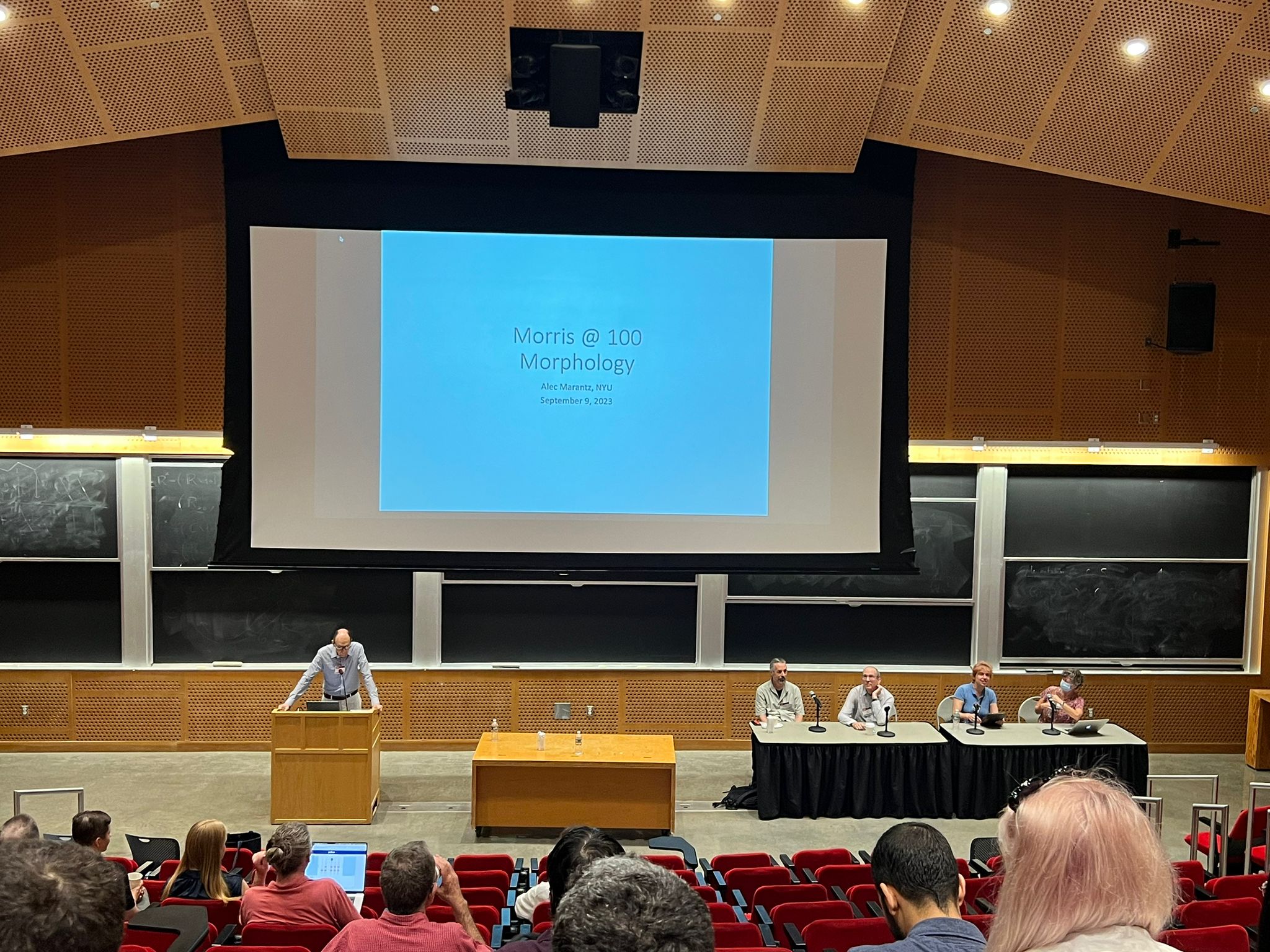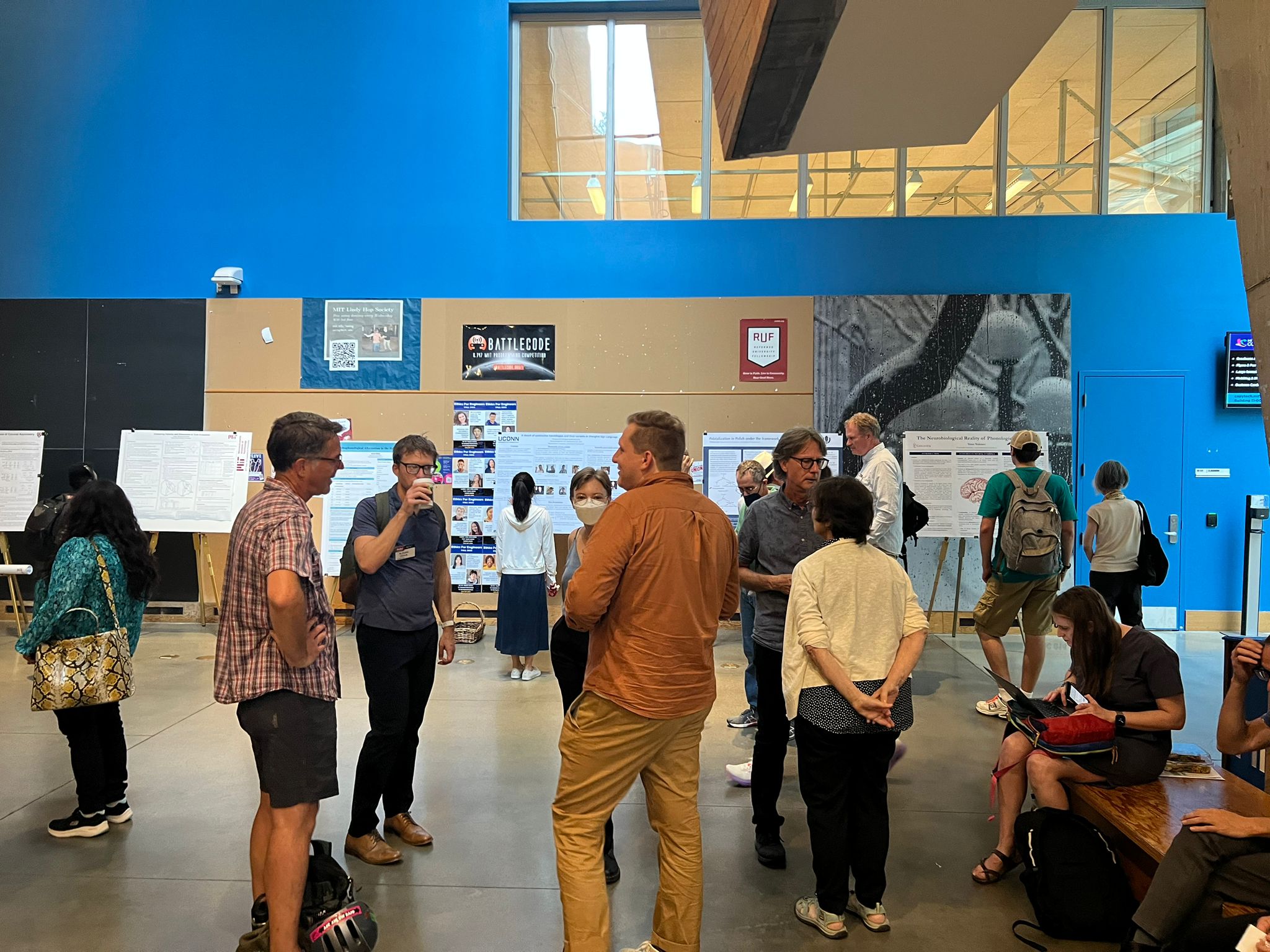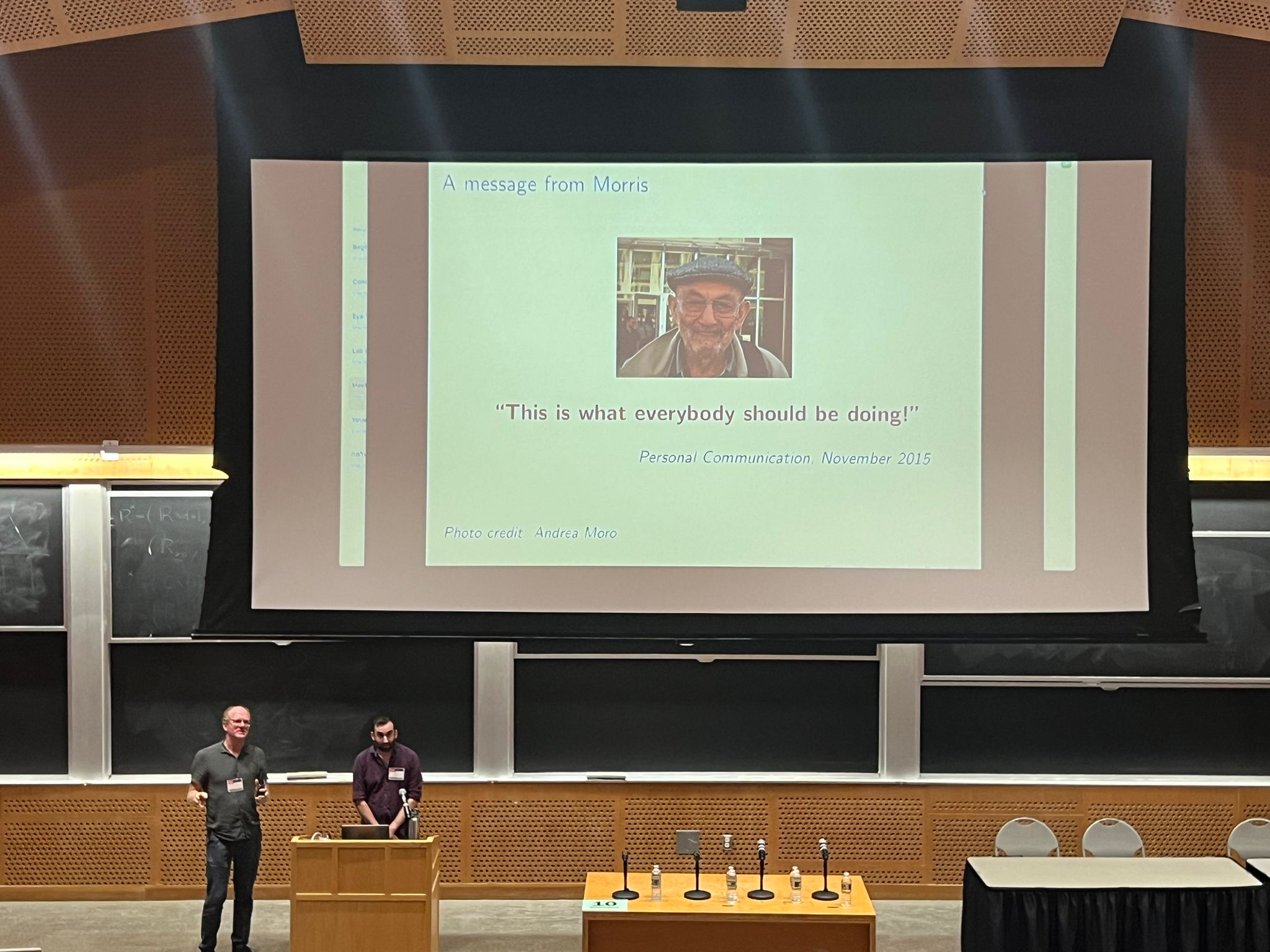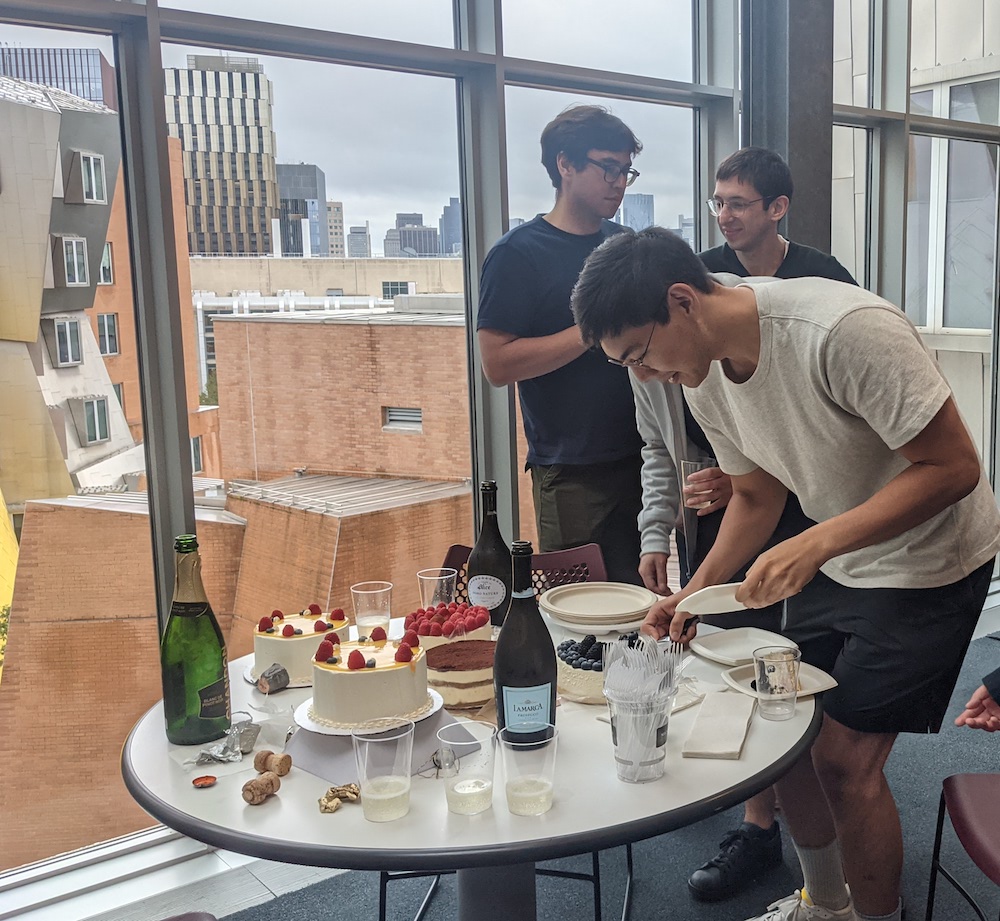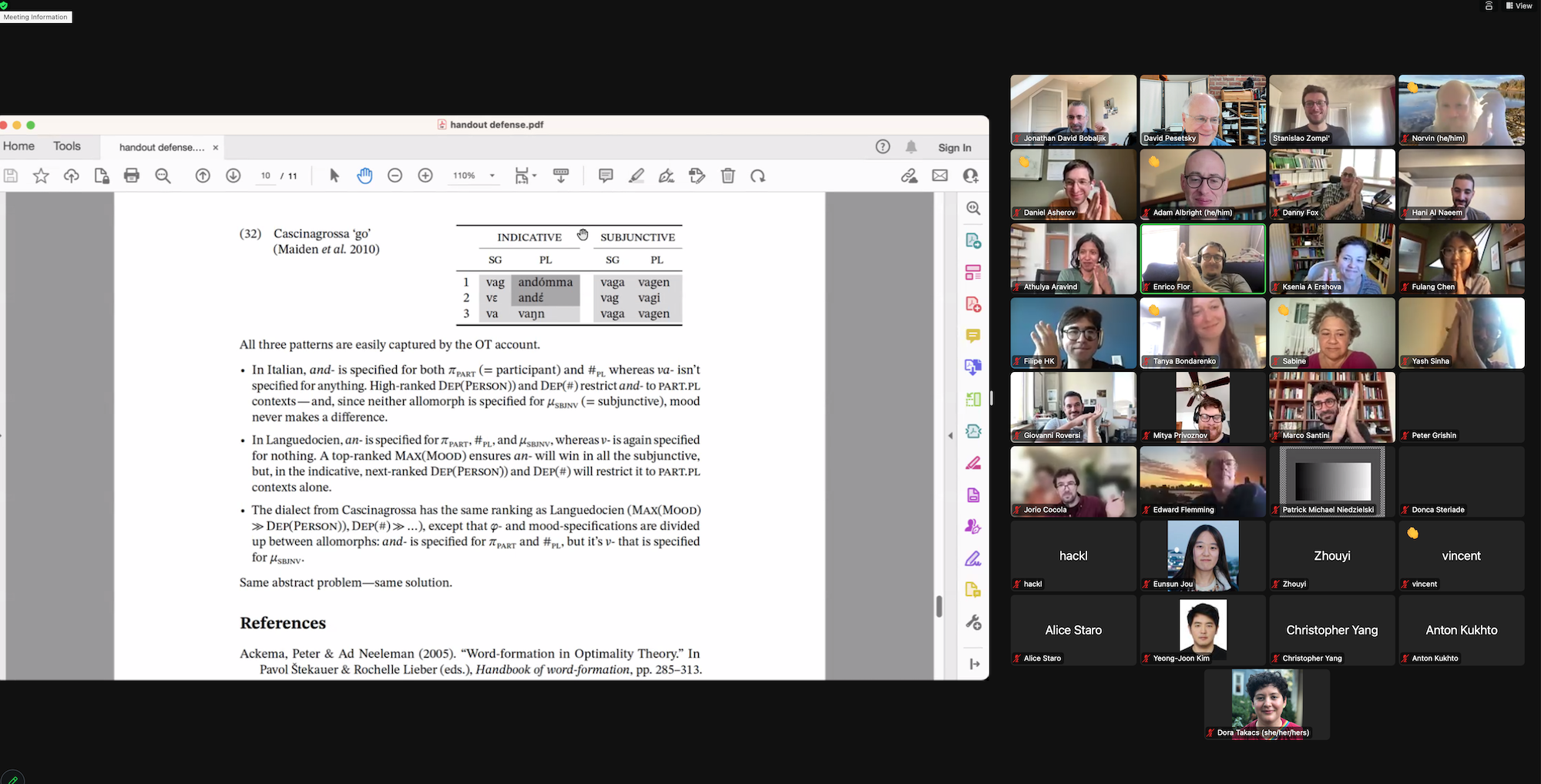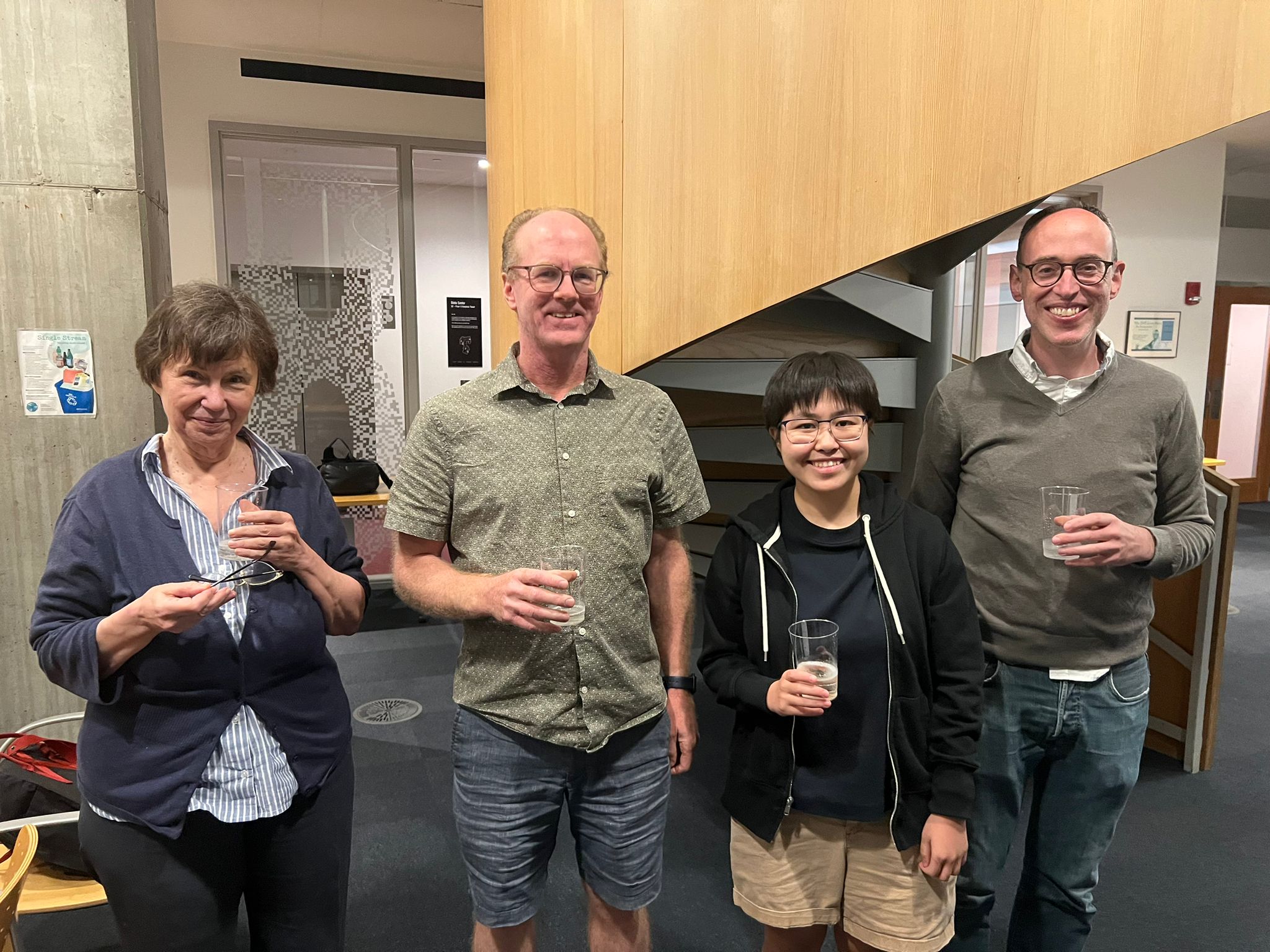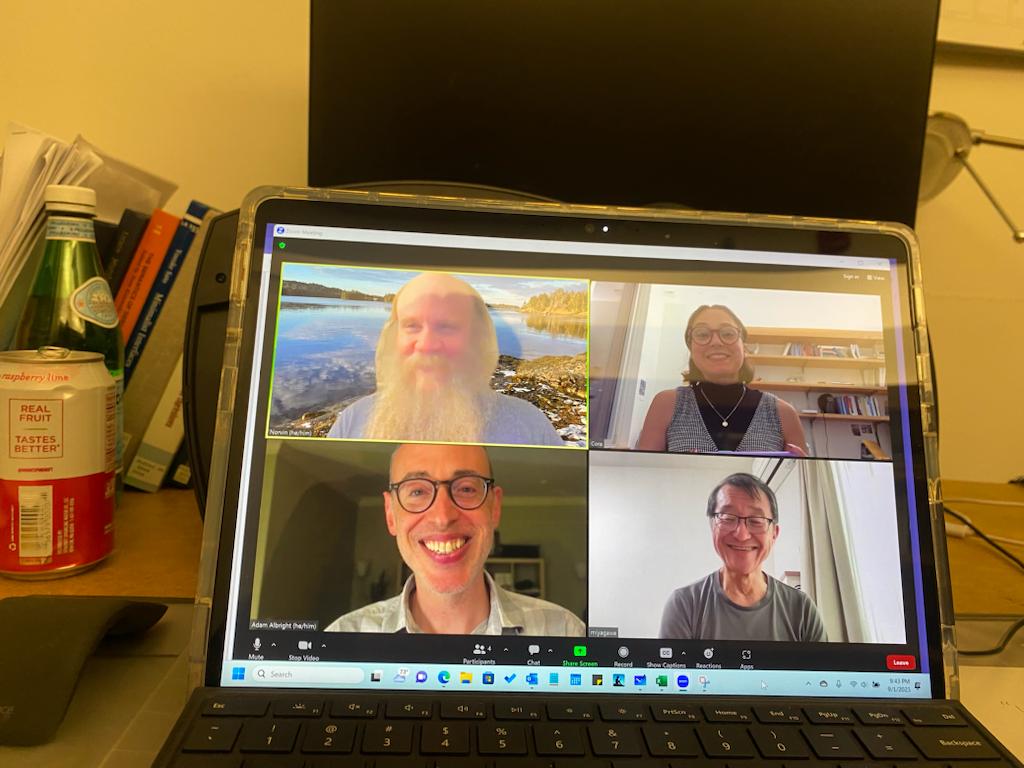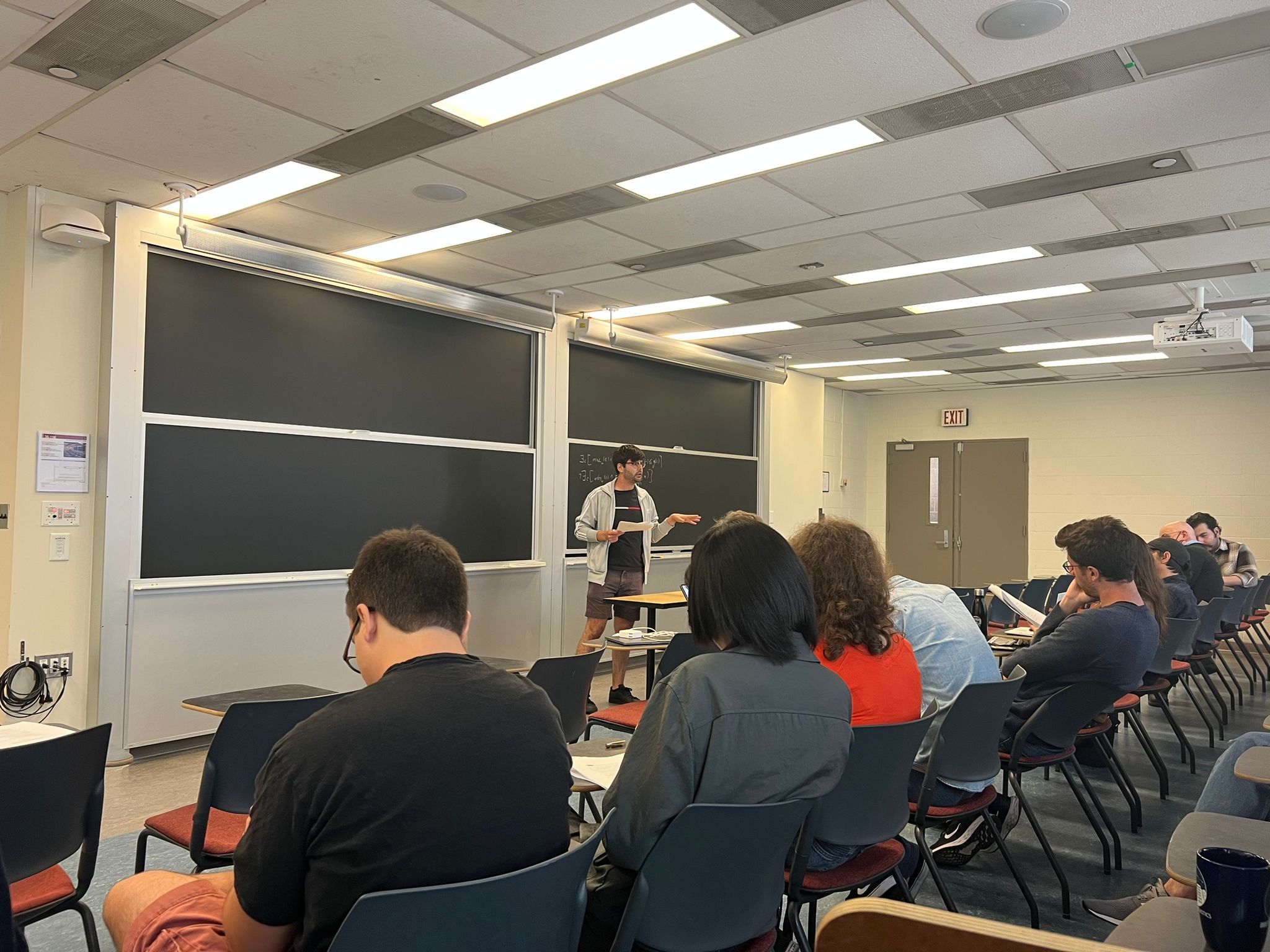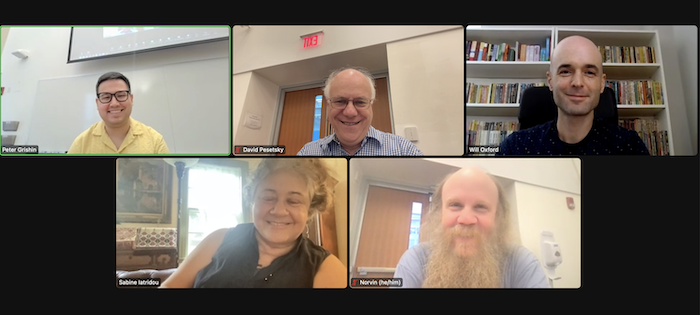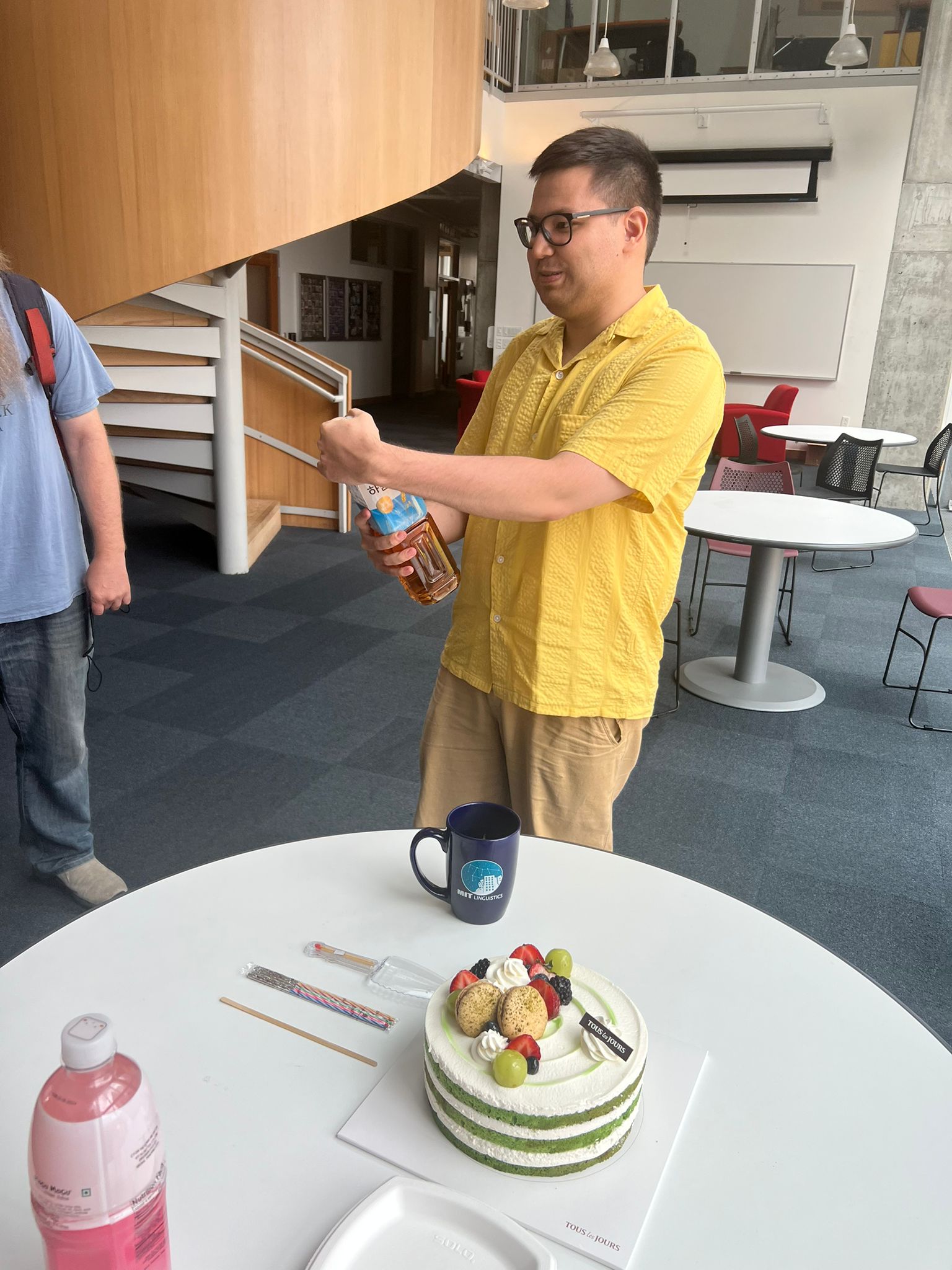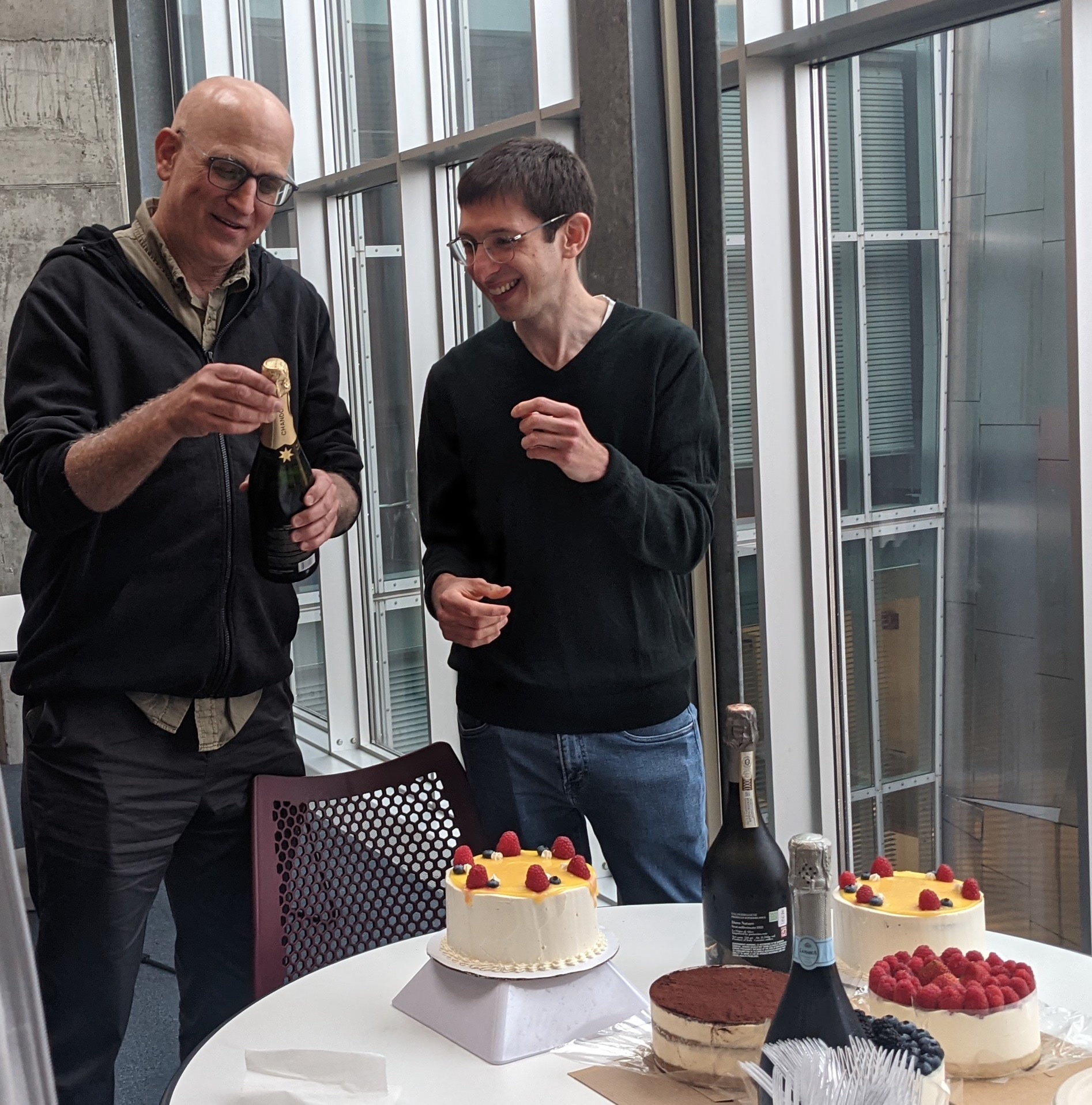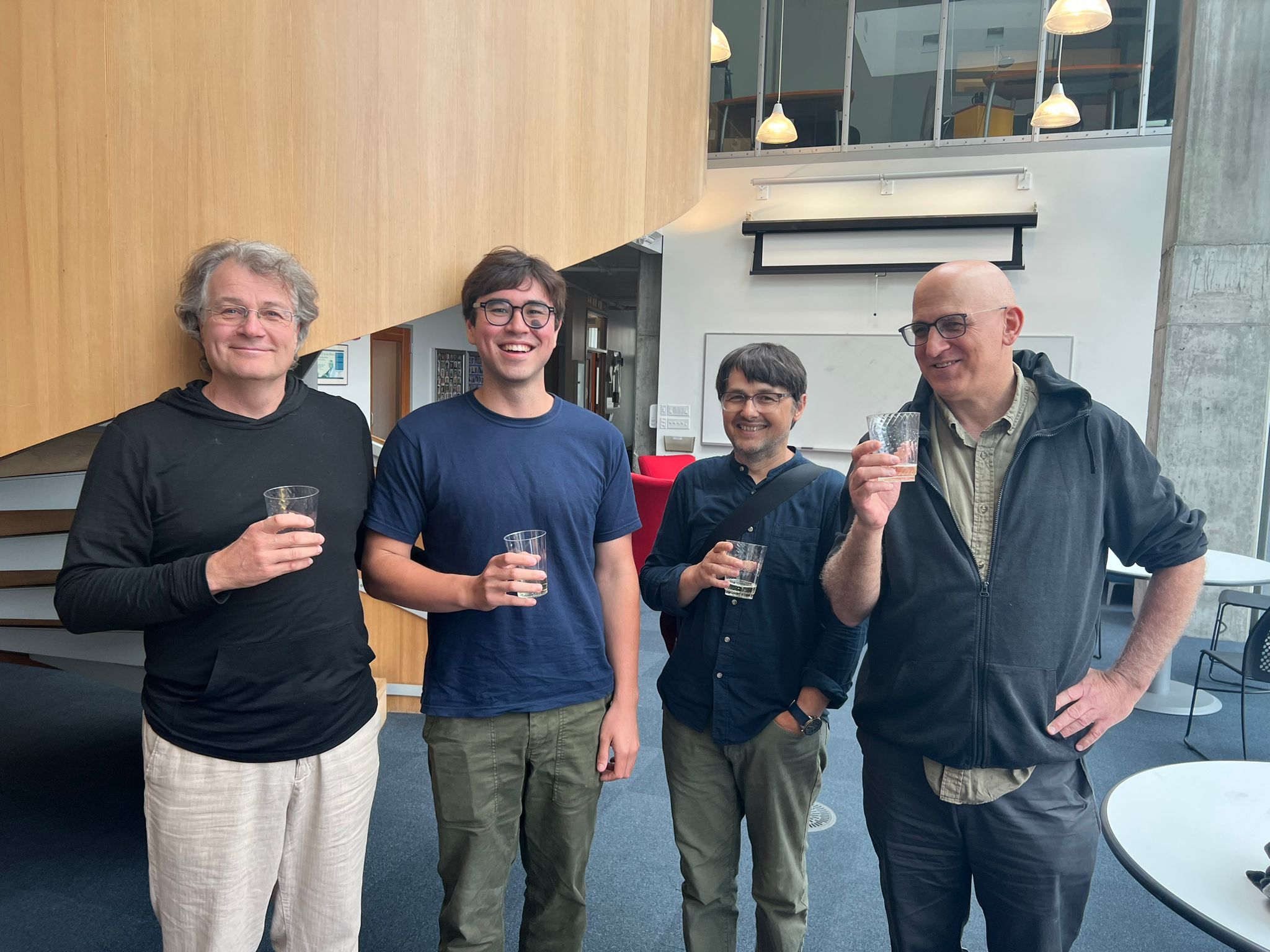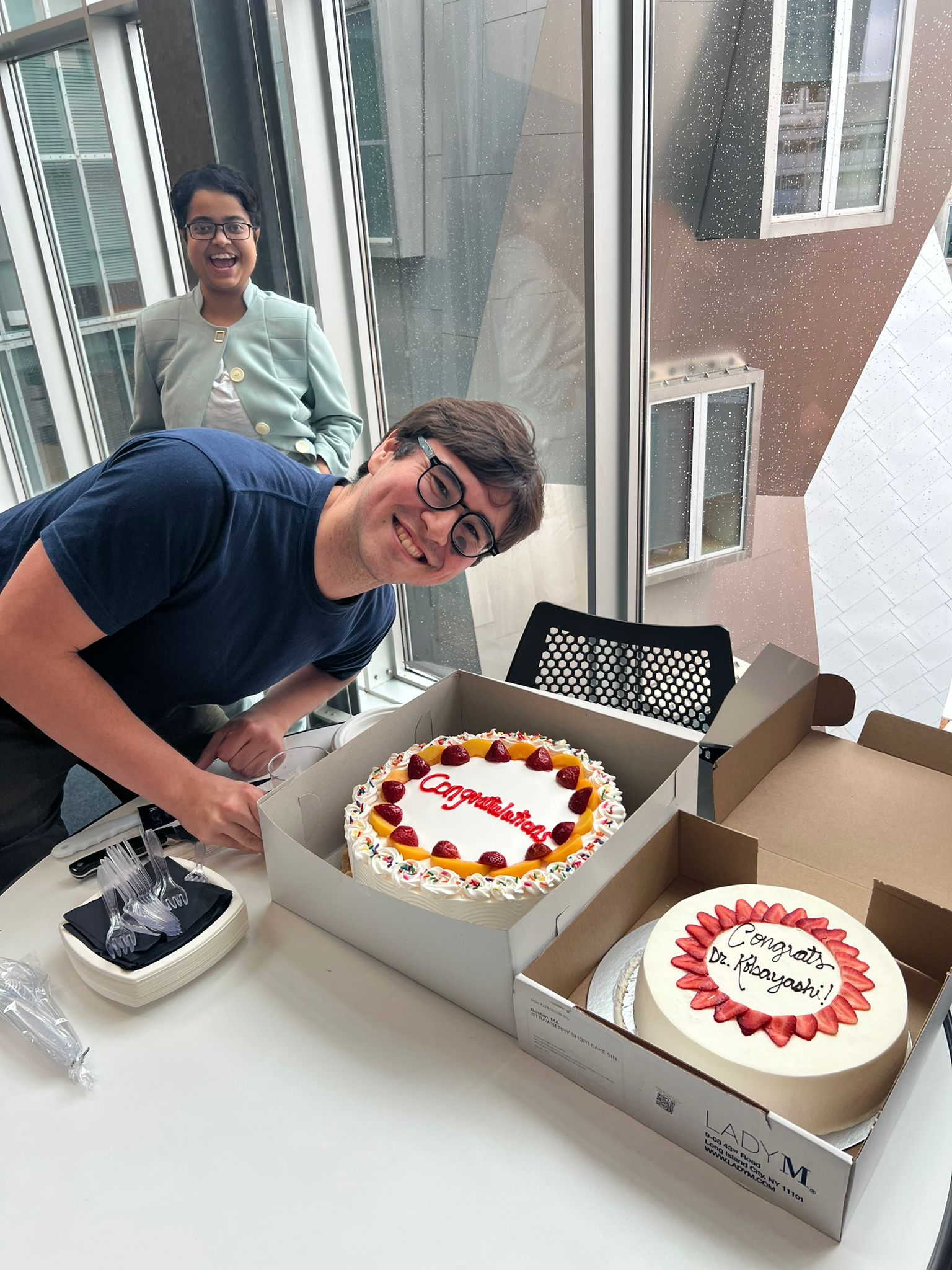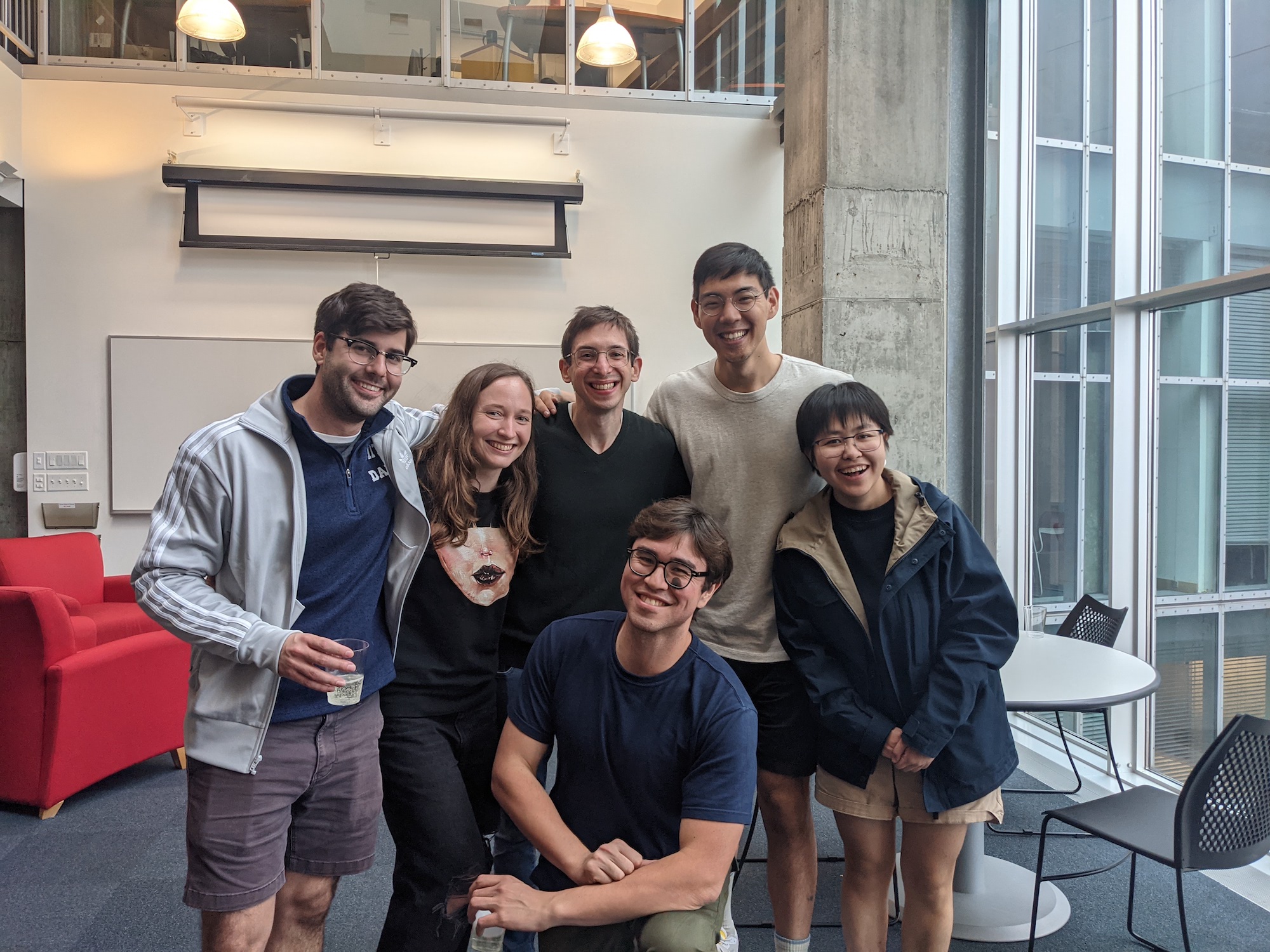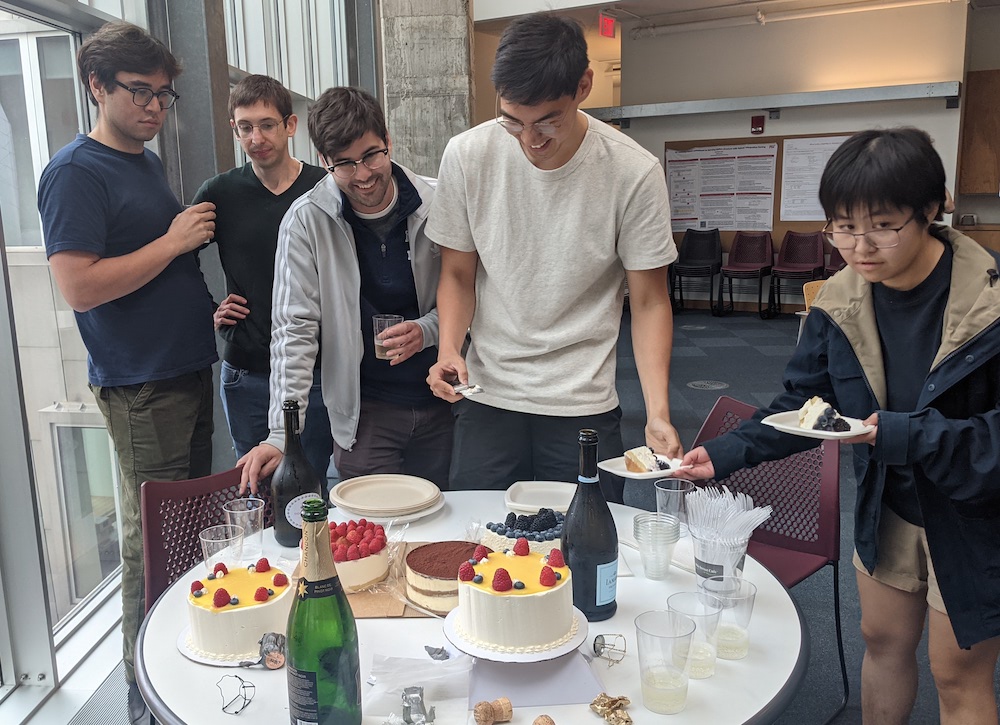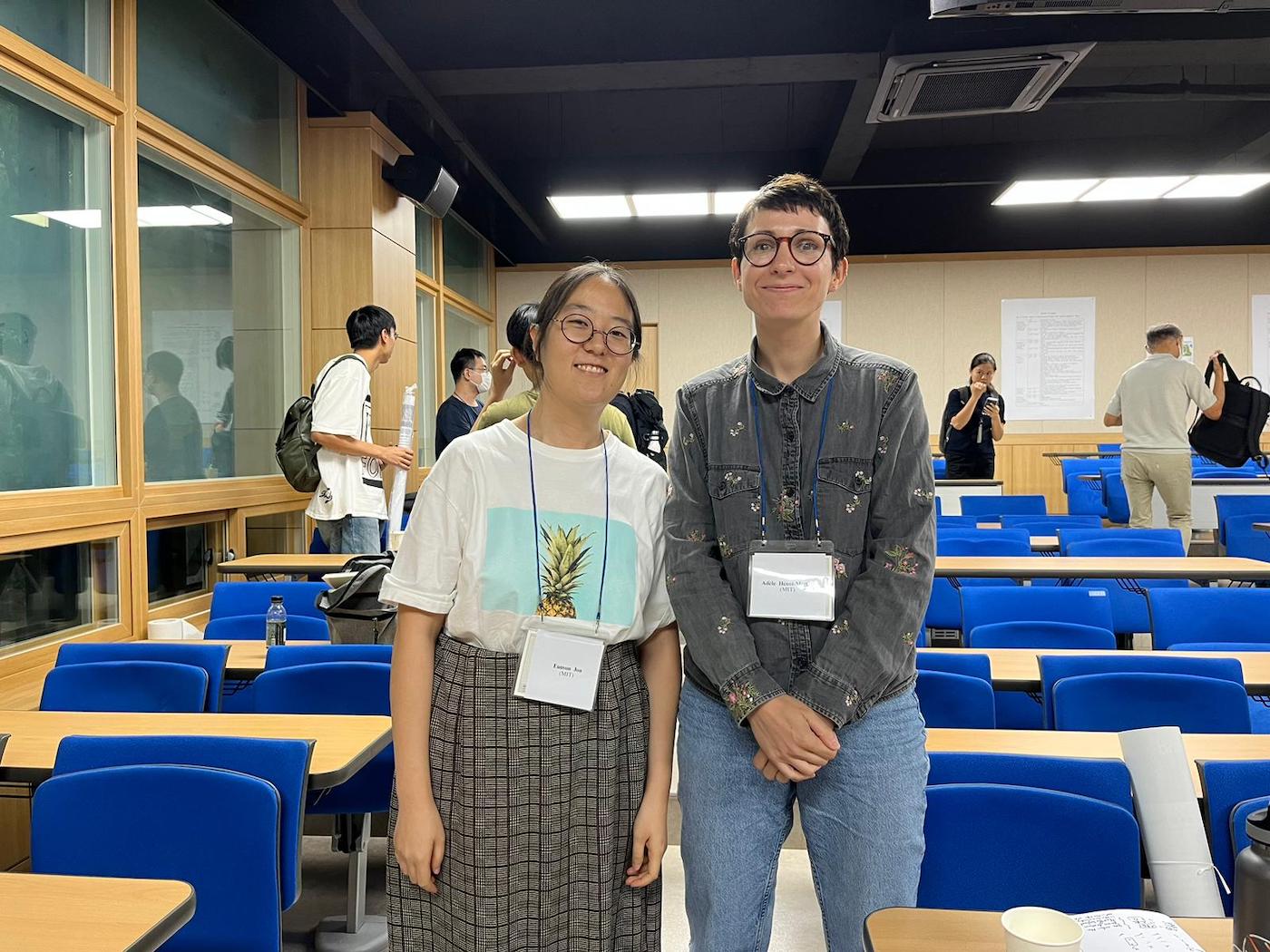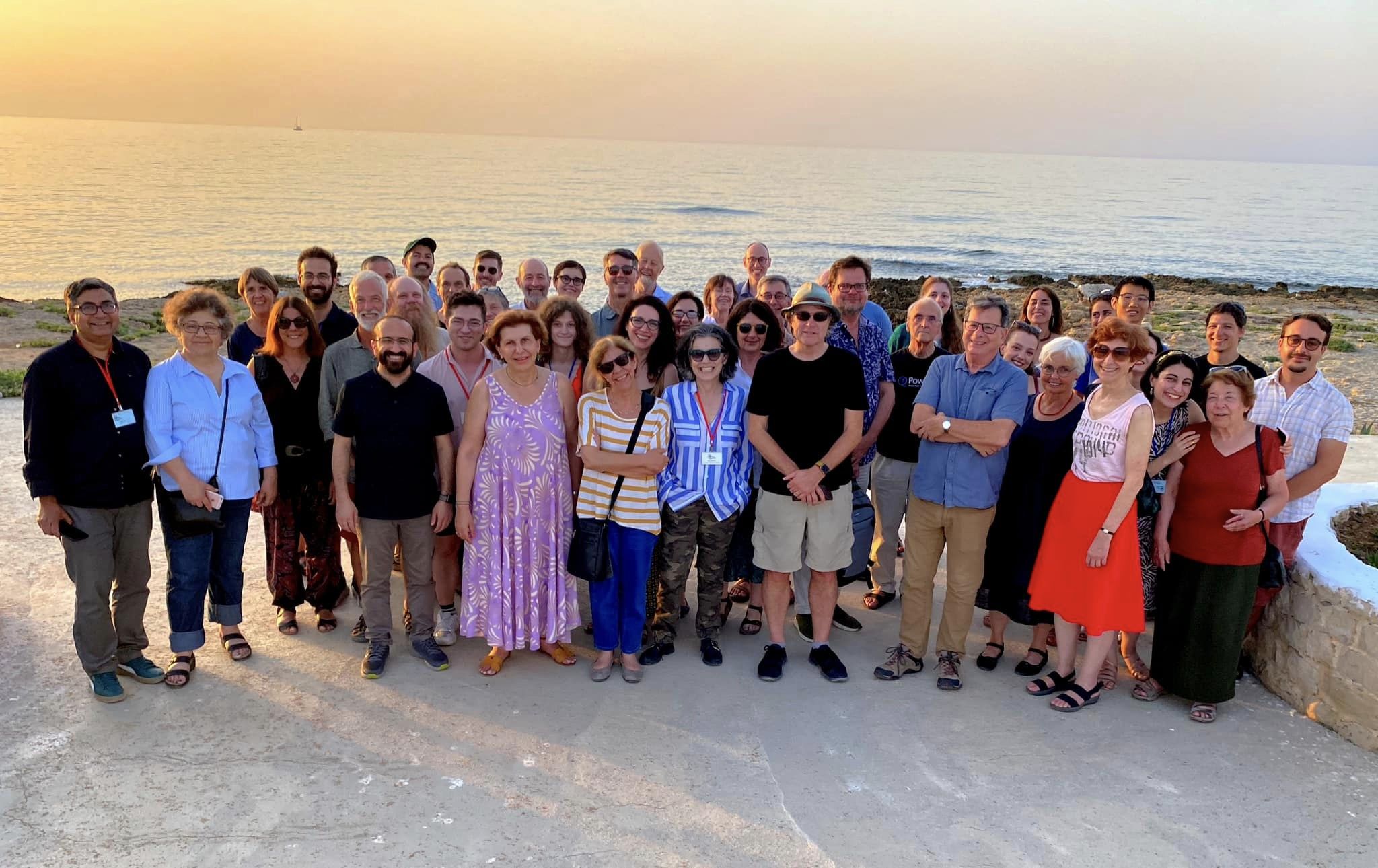M100 @ MIT
The M100 conference, honoring Morris Halle’s centenary, took place in Stata Sep 8-10! It featured sessions on various topics of his work: Morphology, Stress & Meter, Features & Evaluation Metrics, Rule ordering & the cycle. Dinner featured an open mic with participants sharing their memories and stories of Morris.
A huge thank you to the organizers who made this possible: Anton Kukhto, Donca Steriade, Michael Kenstowicz, Zhouyi Sun, Johanna Alscott, and Runqi Tan.
Many of the presentations featured members of the MIT community.
Current students:
- Yeong-Joon Kim, Auditory features and phonological opacity
- Runqi Tan, Comparing features and dimensions in tone evaluation
Alums:
- Juliet Stanton: Distantial faithfulness in Yindjibarndi cluster reduction
- Daniel Harbour: Is Georgian agreement competition just a matter of allomorphy and adjacency? & The Subset Principle and dual-inverse syncretism in Kiowa-Tanoan (joint with Jane Middleton)
- Ezer Rasin: Stress Precedence: A new universal constraint on rule ordering (joint with Vera Rusyanov) & Phonological derivations are not harmonically improving: Evidence from Nazarene Arabic (joint with Eyal Marco, Radan Nasrallah)
- William Idsardi: Same/different and the evaluation metric (joint with Eric Raimy)
- San Duanmu: Zero Derivation between N and V in English and Chinese
- Ora Matushansky: Suffixal complexes and semantic deletion
- Sam Zukoff: Mirror Principle Effects in Templatic Morphology: Asymmetries in Bantu Suffix Doubling and Morphophonology
- Charles Yang: The structural basis of lexical diffusion: The case of diatonic stress shift
- Michael Wagner: Encoding and retrieving grouping and prominence in the speech stream
- Jonah Katz: Meter and constituency in old-school hip-hop
- Andrew Nevins: Stress and Segmental Rules in the Brazilian Ludling TTK (jiont with Felipe Vital)
- Bruce Hayes: A MaxEnt analysis of the meter of Beowulf (joint with Donka Minkova)
Pictures below!
